Study: Cats, Cell Towers are More Deadly to Birds Than Wind Turbines
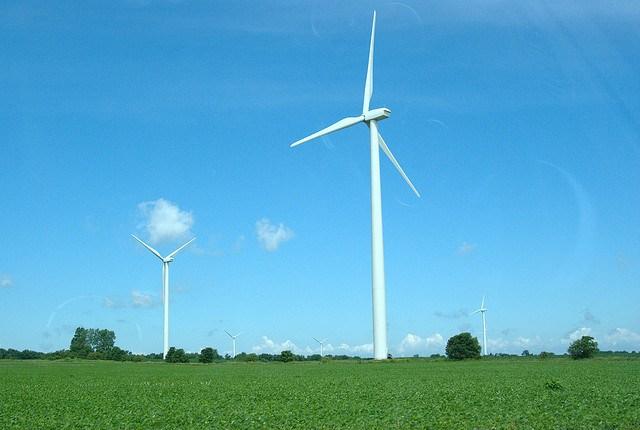

Wind energy has famously pitted environmentalists against each other – renewable energy and climate action advocates vs. wildlife conservationists concerned about wind turbines injuring or killing birds. But a new study, funded by the American Wind Wildlife Institute (AWWI), reveals that bird fatalities resulting from collisions with wind turbines are extremely low; in fact, cell towers and cats kill a far greater number of birds than wind turbines do, the peer-reviewed report found.
Wind turbines are responsible for an estimated 214,000 to 368,000 bird deaths each year, according to A Comprehensive Analysis of Small-passerine Fatalities from Collision with Wind Turbines at Wind Energy Facilities. This is a small fraction of bird fatalities compared with the 6.8 million annual deaths caused by collisions with cell and radio towers and the 1.4 to 3.7 billion fatalities from cats, say the report’s authors, environmental consulting firm West, Douglas Johnson from the U.S. Geological Survey and Joelle Gehring of the Federal Communications Commission.
The report, which focuses on passerines (small birds such as songbirds), is the most comprehensive study of the impacts of wind turbines on small bird populations, said Taber Allison, AWWI director of research and evaluation, in a statement.
“While total fatality numbers inform the scale of the issue, one of the most important scientific contributions from this research is our new understanding of the level of impact on individual songbird and other small passerine species,” said the study’s lead author, Wallace Erickson of West, in a statement. “Using conservative assumptions, we estimate that on an annual basis, less than 0.1 percent (and typically less than 0.01 percent) of songbird and other small passerine species populations in North America perish from collisions with turbines.”
Erickson and his co-authors analyzed data from 116 studies conducted at more than 70 wind energy facilities in the United States and Canada, adjusting for the fact that not all birds killed by wind turbines can be detected during surveys: Some bird carcasses may be scavenged or will decompose before they are counted, while others may be missed by surveyors.
The study’s conclusion? That wildlife advocates should continue to push for bird-friendly locations for wind turbines, but they should also focus on the numerous other “threats that are far more serious in terms of their effect on the populations of these birds,” Taber said.
Climate change is one such threat. The AWWI pointed out that the National Audubon Society has just completed a report for the U.S. Fish and Wildlife Service, finding that climate change puts more than half of all bird species in North America at risk. Of the 588 bird species Audubon studied, 314 species are projected to lose more than 50 percent of their current climatic range by 2080.
Audubon spokesman David Ringer told USA Today that the nonprofit is still reviewing the AWWI’s study, but the organization strongly supports “properly sited wind power as a renewable energy source that helps reduce the threat posed to birds and people by climate change."
The AWWI’s report can be critiqued for concentrating on small birds and not including larger, endangered birds such as bald or golden eagles in the study (passerines accounted for 63 percent of the nearly 5,000 bird deaths observed at wind farms, while raptors made up 8 percent). But the AWWI said it plans to sponsor comprehensive studies of other bird species – including eagles and prairie birds – in the near future. Passerines are actually the largest order of birds and include half the world’s bird species – therefore, they deserve to be studied, too, and were a good place for scientists to start to analyze the effects of wind turbines on bird populations.
AWWI’s study is important in carrying on the conversation between proponents of clean energy and wildlife campaigners – because, at the most basic level, the two sides have the same goal: a planet that is safer and healthier for all living things.
Image credit: Flickr/Patrick Finnegan
Passionate about both writing and sustainability, Alexis Petru is freelance journalist based in the San Francisco Bay Area whose work has appeared on Earth911, Huffington Post and Patch.com. Prior to working as a writer, she coordinated environmental programs for Bay Area cities and counties. Connect with Alexis on Twitter at @alexispetru
Symantec Twitter Chat Recap: "Bridging the Workforce and Diversity Gaps”


What could companies do better when it comes to diversity in the workplace, and how can we address the skills gap happening across certain industries like tech?
On Thursday, September 18th, TriplePundit addressed these issues as we hosted "Bridging the Workforce and Diversity Gaps" on Twitter at #diversity.
We engaged corporate responsibility thought leaders in conversation around affirmative action, gender gaps, transnational human rights issues, and much more.
Symantec panelists included:
- Cecily Joseph, VP of Corporate Responsibility & Chief Diversity Officer at Symantec Corporation.
- Marian Merritt, Director of Cyber Education and Online Safety Programs for Symantec Corporation.
Guests participants included:
- Meghan Ennes, Community Coordinator at the Shared Value Initiative.
- Susan McPherson, passionate cause marketer, angel investor, and corporate responsibility expert.
During the course of this hour-long chat, we reached over a million Twitter accounts and generated millions of Twitter impressions across the social media site! Just a few of your distinguished participants included Seth Leitman, David Connor, John Friedman, Milinda Martin, and Henk Campher.
Below is the Storify summary of the conversation on #diversity as it took place. For more information on Symantec's CSR program, feel free to reach out to Cecily Joseph or Marian Merritt via Twitter.
Image Credit: George A. Spiva Center for the Arts
Bacardi Partners with World Wildlife Fund on Sugarcane Farm
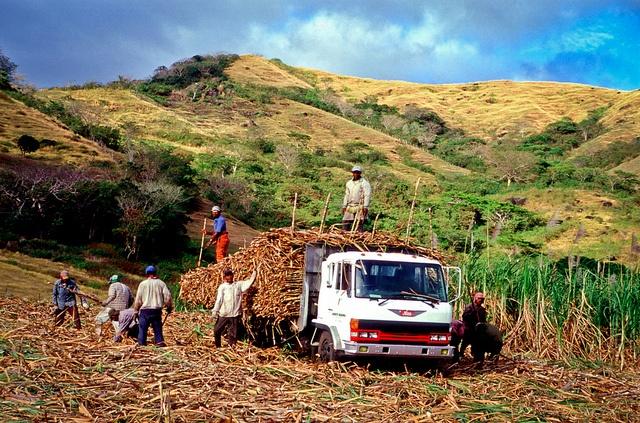

World famous rum maker Bacardi and the World Wildlife Fund are aiming to advance sugarcane standards in Fiji with a model sugarcane farm program.
The purpose of the initiative is to protect Fiji’s Great Sea Reef and tropical farmland. The Great Sea Reef is one of the largest reef systems in the world, supplying up to 80 percent of the domestic fish market.
The changes in farming that are part of the initiative include terracing and carefully distancing rows of sugarcane, which help control nutrient and seed runoff into the waterways that lead to the reef. WWF developed the model farms in Fiji.
The initiative helps protects both Fiji’s environment and its economy. Back in 2007, Bacardi started getting involved in sugarcane initiatives. “We saw sugarcane was in one of the important sectors for environmental, economic and social factors...sugarcane is important for rum development,” Dave Howson, global sustainability director for Bacardi, told me.
Bacardi ended up “being one of the founder companies” in the model farm initiative, Howson said. WWF was setting up a project in Fiji, which included the improvement of farming practices. “It was a great opportunity” for Bacardi, according to Howson.
Sugar is Fiji’s oldest industry, and it’s a “very small holder focused industry,” Howson explained. Before WWF’s sugarcane initiatives, farmers would grow sugarcane up to the water. The health and biodiversity of river systems and coastal areas is being affected by sugarcane farming, sedimentation from soil erosion and waste from sugarcane farming.
Beyond making a positive environmental impact, WWF has also helped sugarcane farmers. Sugarcane farmers are some of the poorest people in Fiji. A better sugarcane yield helps improve farmers’ lives. As Howson said, the higher the yield of the sugarcane, the higher the economic stakes. Education is also improving the lives of farmers and farm workers. A huge NGO like WWF can help out farmers, particularly when it partners with a company like Bacardi.
Bacardi sets the bar high when it comes to sourcing sustainable sugarcane, and the company influences other companies with its commitments. Bacardi pledged that by 2022, 100 percent of the sugarcane-derived products used for its rum will come from certified, sustainable sources. The pledge is the first of its kind in the industry. “We were the first company to set a time-bound commitment to sourcing sustainable sugarcane,” Howson said.
Bacardi also helped to establish Bonsucro, described as a global, multi-stakeholder nonprofit initiative that improves economic, environmental and social conditions of sugarcane production around the world. The Bonsucro standards are the only ones focused on sugarcane. Almost 200 members from 27 countries are members of Bonsucro, and they represent various sectors of the supply chain. Bonsucro is mainly focused on Brazil and Australia. “There’s a lot of activity going on to spread the standard,” Howson said of Bonsucro. “It’s really creating a buzz. Sugar is extremely important to most of these companies.”
Image credit: Asian Development Bank via Flickr
8 Ways Community Engagement Strategies Can Drive Business Returns
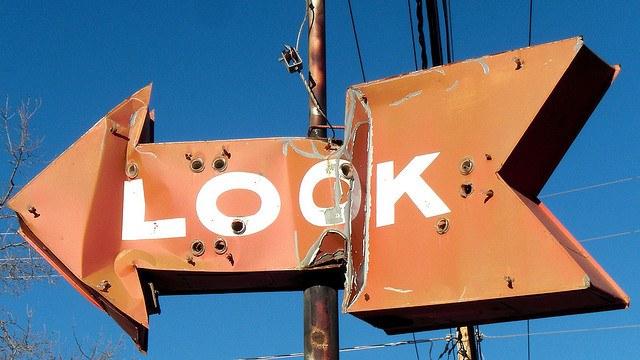

By Phil Preston
Community engagement strategies are becoming more sophisticated and increasingly being used to drive financial returns. Knowing where to start can be tricky, so I’ve outlined eight entry points that you can use to kickstart your strategy process:
1. Purpose: Re-examine your mission and express it in terms of societal benefit
An Australian insurer expresses its purpose as “to help people manage risk and recover from the hardship of unexpected loss," which is a powerful way of thinking and more meaningful than “to be the outstanding competitor in our chosen markets…” Clarity of purpose provides a platform for new opportunities and builds resilience into the business model.
2. Positioning: Integrate your unique assets and strengths into your strategies
A local property developer includes social assets, such as schools, in its new residential releases. It has developed insight and understands how customers value these features. Learning how to identify and develop your assets, such as intellectual property, is the key.
3. Products: Harness social trends for product and market development
The aging membership base of a motoring organization led to the development of an online tool to help members maintain or improve their quality of life. It helps them cut through an overload of information in areas such as aged care advice, travel and volunteering opportunities. Tapping into societal trends assists product innovation.
4. Productivity: Identify social factors constraining your business
Chilean fruit exporter, Subsole, provides better access to healthcare for seasonal workers via mobile clinics and receives a 2.5x return on investment . Examining social factors in your workforce and supply chain can pay off.
5. Problems: A new lens for addressing business problems
A battery retailer engaged local schools and rolled out a household battery recycling program to help differentiate itself from competitors. It created a new channel to market, improved the value proposition for its customers and led to a dramatic increase in foot-traffic and sales growth. Applying a community or social lens can lead to business model and performance improvements.
6. Programs: Increase your return on existing or new community programs
I recently helped a local steel company create an innovation challenge for its emerging leaders. They are shoring up funds for two local charities and helping them find a more sustainable business model. It provides development opportunities that they wouldn't normally get in their workplace.
7. Performers: Help your high performers stay with you for longer
"James" was made a partner at his law firm, only to quit the following day to pursue his passion for a social cause. This risk could be mitigated by helping time-poor high performers make a difference in the world in the context of work demands. Instead of sending them on more ‘training,' the return on investment in personal support or coaching may be attractive.
8. People: Increase employee engagement for internal productivity
Determine whether there is a causal link between your corporate volunteering programs and employee engagement levels. Some fine tuning can make a world of difference. Companies such as IBM, Time Warner Cable and National Australia Bank offer paid volunteering leave and encourage skilled-based programs and strive to improve engagement outcomes.
The benefits of community engagement strategies haven't always been properly recognized. To start your own explorations, focus on the two or three approaches listed here that are most relevant to your present circumstances. Start collecting and facilitating views from employees and other stakeholders, with the ultimate aim of improving society and the returns to your business.
Which of these approaches provides the greatest opportunity for you?
Image credit: timlewisnm, Flickr
Phil Preston helps businesses devise community engagement strategies. He is based in Sydney, Australia, and can be contacted via [email protected] or followed on Twitter (@PhilPrestonTwit)
Tesco execs suspended over £250m profit overstatement


British supermarket giant Tesco has suspended four executives, including its UK managing director, after the retailer overstated its half-year profit guidance by £250m.
It has launched an investigation - headed by audit company Deloitte - and says it is working to establish the impact of the issue on its full-year results.
"We have uncovered a serious issue and responded accordingly," Tesco chief executive Dave Lewis told the BBC.
Commenting on the reporting error, Professor of Accounting at Warwick Business School Crawford Spence said: “This revelation should be interpreted as a sign of distress. Tesco has essentially tried to recognise revenue too early and delay the recording of costs until a later date. Accounting is not a hard science and some of this behaviour is acceptable, within limits. What Tesco appear to have done is push the boat out a bit too far, ending up with revenue that hadn't really been earned yet and costs that probably should have been booked earlier.
“It is a classic 'earnings management' issue. Firms quite legitimately play around with their revenue and expenses all the time. However, when they do so aggressively, as Tesco appear to have done, this is usually because the firm is under pressure elsewhere. In Tesco's case, it has been losing market share to its competitors steadily in recent years and losing value quite dramatically in its share price in recent months. Rather than fix the underlying problems, they have been playing around with their numbers to try to make things look better.
“To Tesco’s credit, however, it has flagged this up internally and is doing something about it, which suggests that there are probably no other big accounting shocks hidden away.
“Given it this has been flagged up and dealt with internally it is unlikely any court proceedings will occur. Tesco could be fined by the authorities, but they will most likely wait to hear what the auditors, Deloitte, uncover first.”
People's Climate March: Being a Part of Something Big
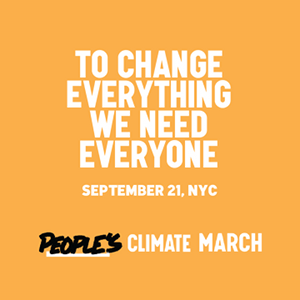

Editor's Note: A version of this post was originally published on the EcoPlum blog.
By Gia Machlin
I was born in the '60s and often think about how crazy that decade was. President John F. Kennedy was killed when my mom was pregnant with me; our good family friend Andrew Goodman was killed in Mississippi right around my birth; Martin Luther King, Jr. and Robert Kennedy were both killed when I was 4. It must have seemed like the world was falling apart.
Yet the world changed in significant ways that decade, and many people gained rights and freedoms that allowed them to achieve what they only dreamed of at that time. Today, my family, colleagues and coworkers will be part of something HUGE – something so big that it is reminiscent of the groundswell that was the Civil Rights movement: the People’s Climate March here in New York City.
When you think about it, our rights to a clean and sustainable world are being denied by a powerful establishment that is fighting for the status quo with their billions of dollars. Today, we are taking to the streets and demanding our rights back!
Climate Change affects us all in different ways: If you live in a coastal area, you’ve no doubt been touched by flooding from rising sea levels. Our friends on the West Coast are experiencing unprecedented drought. In Nebraska, dirty tar sands from the Keystone XL pipeline could toxify the prairies, while in Virginia, mountaintop removal mining is contaminating watersheds. In Asia and Africa, serious conflicts could occur due to the rising number of climate refugees. Much less serious, but closer to home and more relatable by many of us, we are losing our snow and beloved winter recreation activities. I could go on and on.
Indeed, it feels like the world is falling apart, just like it did in the '60s. And just like we did before, we are taking to the streets to demand action. You may think comparing a global environmental crisis to the lack of civil rights in the U.S. is peculiar, and I don’t disagree. But the upshot is: The activism worked. We now have a president who, back when I was born, did not even have federally protected equal voting rights. Let’s make ourselves heard loud and clear, so that 50 years from now, we have a world that is better than it is now: A world where renewable energy is the norm; where the cost of environmental externalities must be accounted for by every government; and where our children will say, "I can’t believe they still drilled for oil when I was born."
Click here for more 3p coverage of the People's Climate March.
Image credit: People's Climate March. Click here for more shareable graphics.
Gia Machlin is president and CEO of EcoPlum.
SOCAP 14 Interview: Marissa Feinberg, Impact HUB NYC


This video is part of our ongoing coverage of SOCAP14. To see the rest please visit our SOCAP 14 page here.
Marissa Feinberg is co-founder of Impact HUB New York, a co-working space founded on a social enterprise mission. She also talks about how the HUB is structured and how HUB New York will interact with others in the network.
Marissa and her team will also be hosting us on October 2 for Stories & Beer with a focus on the intersection of water and the fashion industry. RSVP here if you want to come by!
3p Weekend: 7 Things You Need to Know About the People's Climate March
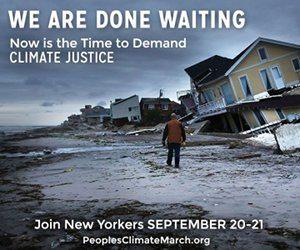

With a busy week behind you and the weekend within reach, there’s no shame in taking things a bit easy on Friday afternoon. With this in mind, every Friday TriplePundit will give you a fun, easy read on a topic you care about. So, take a break from those endless email threads, and spend five minutes catching up on the latest trends in sustainability and business.
On Sunday, more than 100,000 people and 1,400 businesses, schools and other organizations will take to the streets of New York City for the People's Climate March. It's being billed as "the largest climate march in history."
You've probably seen some details about the march buzzing around your favorite newsfeed, but in case there are any unanswered questions, we're here to help. To get you in the sign-waving mood, here are five things you need to know about the People's Climate March before it kicks off on Sunday.
1. Why they're marching
The core unifying slogan of the march is, "Action. Not Words." It seems fitting, as protesters plan to gather on Sunday with the aim of inspiring global leaders to take significant action to address climate change.
But, as Jenny Marienau of 350.org put it in a recent interview with the Bard Center for Environmental Policy, that isn't all the march is about. It's also an opportunity for solidarity among citizens and organizations that see climate action as a priority:
"The People’s Climate March was planned as a way to take advantage of that national stage to demonstrate the power of the climate movement," Marienau said. "We tried to bring together all of the different constituencies involved, to flex the climate movement’s muscle and let it see itself all together, marching in the street."
2. Who's participating
The march is expected to gather more than 100,000 people and 1,400 businesses and other groups. A number of celebrities, ranging from Prince Albert II of Monaco to actors like Willem Dafoe, Susan Sarandon and Brad Pitt, will also join the ranks at the march this weekend to show their support for climate action.
Much like the 'Occupy' protests, the People's Climate March has no sole organizer. Several different bodies collaborated on the march, including local New York-area community groups, international NGOs, grassroots networks, churches and faith organizations, and many more. (Click here for a full list of participating organizations.) Some, like Patagonia, are taking things a step further: The outdoor apparel company will close all of its New York City stores on Sunday in support of the march.
3. The timing isn't random
On Sunday, more than 100,000 people will take to the streets of New York City, but the timing of the march isn't random.
On Tuesday, Sept. 23, U.N. Secretary-General Ban Ki-moon is hosting a climate change summit for political leaders in New York City. It will be the most high-profile, global moment focused on climate change in years -- making this weekend the perfect opportunity for stakeholders to make their voices heard.
Next week's climate meeting is the beginning of a series of summits aimed at solving some of the world's most pressing challenges. In September 2015, politicians and delegates will reconvene in New York to agree on the definite to-do list for ending poverty worldwide - an impossible task without addressing climate change, which threatens essentials like water, food, shelter and safety, Climate March organizers say. A global action plan on climate change is then due in Paris three months later.
4. You can participate from all over the world
While the main mobilization will take place in New York, solidarity events are planned for more than 100 locations around the world. Even smaller events, designed to reinforce the global nature of concern, have sprung up in cities on every continent. Click here to find an event near you.
5. Or hitch a ride
If you'll be in the U.S. this weekend, you can likely hitch a ride to New York for the People's Climate March. Event organizers have compiled a list of available buses, trains, rideboards and creative group transit ideas for nearly every state in the nation. Click here to find resources near you. (You can also coordinate a bus in your community.)
6. This isn't the first event
The People's Climate March may have just popped up on your radar over the past few weeks, but mobilization started much earlier. Events kicked off on August 23 with a human chain in the Lausitz region, near the German-Polish border, to spur the energy revolution and a future without brown coal. Other events included Sweden Fossil Free Weekend the Pacific Climate Warrior Voyage, which aims to block the world's largest coal port.
7. You can still sign up to volunteer
Think it's too late to volunteer in New York this weekend? Fuhgettaboutit! The People's Climate March is still gladly accepting volunteers. If you live in the New York area, click here for more details about manning phone banks or volunteering on the day of the march. Please note that since things are bound to get hectic on march day, volunteers will need to attend a short training in advance (the last training is offered on Saturday, Sept. 20).
If you live outside the area, one of the best things you can do to help out is to organize a bus in your local neighborhood and invite friends and neighbors to take part. Click here for details about becoming a bus captain.
The People's Climate March will be largest unified gathering in support of climate change action to date. While one protest may not turn the tides, it's an unparralled opportunity for concerned citizens, businesses and other stakeholders to make their voices heard. So, gather up those megaphones and protest signs, and we'll see you at the march!
Image credit: People's Climate March. Click here for more shareable graphics.
Based in Philadelphia, Mary Mazzoni is a senior editor at TriplePundit. She is also a freelance journalist who frequently writes about sustainability, corporate social responsibility and clean tech. Her work has appeared in the Philadelphia Daily News, the Huffington Post, Sustainable Brands, Earth911 and the Daily Meal. You can follow her on Twitter @mary_mazzoni.
White House, USDA Give Clean Energy Sector $68 Million Boost
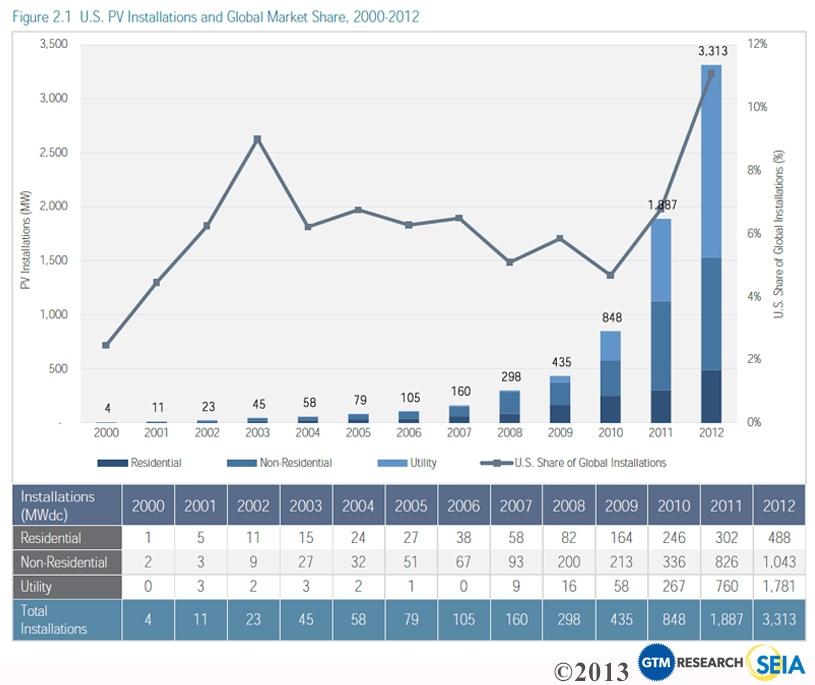

Following through on President Barack Obama's plans to combat climate change and boost energy productivity, the U.S. Department of Agriculture on Sept. 18 announced it is providing $68 million in funding for 540 renewable energy and energy efficiency projects around the nation.
Agriculture Secretary Tom Vilsack announced the funding while visiting North Carolina to highlight USDA's investments in rural renewable energy projects. He emphasized the economic, as well as social and environmental, benefits government support and stimulus is having in the young but fast-growing renewable energy and energy efficiency sectors.
"These loan guarantees and grants will have far-reaching impacts nationwide, particularly in the rural communities where these projects are located," Vilsack said. "Investing in renewable energy and energy efficiency will continue the unprecedented increase in home-grown energy sources and American energy independence we've seen in recent years. This is creating jobs, providing new economic opportunities and leading the way to a more secure energy future."
$68 million in USDA funding for 540 projects
The $68 million in funding is being provided via USDA's Rural Development's Rural Energy for America Program (REAP). REAP was created via the 2008 Farm Bill. The program was reauthorized by the 2014 Farm Bill, which recently passed into law, USDA notes in a press release.
“REAP has supported more than 8,800 renewable energy and energy efficiency projects nationwide,” USDA highlighted. “During this period, USDA has provided more than $276 million in grants and $268 million in loan guarantees to agricultural producers and rural small business owners.”
This latest announcement of DOA funding for renewable energy and energy projects is the latest in a series of funding announcements that follow through on President Obama's “all of the above” energy strategy.
Funding for bio jet fuel production
Two weeks ago USDA announced a $105 million loan guarantee for Fulcrum Sierra Biofuels LLC – the first loan guarantee USDA has made for the production of bio jet fuel. The loan guarantee will facilitate Fulcrum's ability to secure bank financing to build a bio-refinery in McCarran, Nevada, that is to produce jet fuel from municipal solid waste.
Commenting on the Fulcrum Sierra Biofuels loan guarantee while speaking at the National Clean Energy Summit 7.0 in Las Vegas the week of Sept. 4, Secretary Vilsack said:
"This represents a huge step forward in the development of clean, renewable, job-creating American fuels," Vilsack said during a speech at the National Clean Energy Conference. "The nation is entering a new energy age that will make us more energy independent, cut carbon pollution and strengthen our economy, especially in rural communities where clean fuels will be produced."
New solar commitments and executive actions
The USDA's announcement also came on the same day President Obama announced new executive actions and commitments from organizations around the nation to continue advancing development of solar energy technologies.
On Sept. 18, the White House announced “a series of public and private sector commitments and executive actions to advance solar deployment and promote energy efficiency.” Elaborating, the White House listed them as follows:
- Partnering with up to three military bases to create a veterans solar job training pilot;
- Investing $68 million in 540 renewable energy and energy efficiency projects in rural areas across the country, including 240 solar projects;
- Proposing an energy conservation standard for commercial unit air conditioners that has the potential to save more energy than any previously issued standard;
- Supporting funding for clean energy and energy efficiency for affordable housing;
- Strengthening commercial and residential buildings codes; and
- Harmonizing the power of national service and volunteerism to tackle climate change and its effects.
All told, these executive actions and commitments are expected to reduce carbon pollution by some 300 million metric tons through 2030. That's equivalent to taking more than 60 million cars off the road for one year. It will also save on energy bills for homes and businesses to the tune of over $10 billion, the White House highlighted.
Joining with the president and his administration, 50 companies, states, communities and leaders in the field of multi-family housing pledged to deploy over 35 megawatts' (MW) worth of solar energy systems and improve energy efficiency. That's enough to power thousands of U.S. homes. Their energy efficiency commitments, moreover, should lower energy bills spanning over 400 million square feet of office space, according to the White House.
*Images credit: 1), 2) USDA; 3) SEIA, GTM Research
Can the Great Barrier Reef Be Saved?


In 1981, the United Nations Educational, Scientific and Cultural Organization (UNESCO) designated Australia’s Great Barrier Reef a World Heritage Site. Just 25 years later, however, UNESCO warned that climate change and other anthropogenic causes were threatening the reef’’s existence. In fact, according to a 2012 report by the Australian Institute of Marine Science, the reef has lost over half of its coral in the past quarter-century.
Earlier this year, UNESCO’s World Heritage Committee noted that conservation efforts at the reef were making some progress, but that significant dangers still remained. The committee encouraged the Australian government to submit an updated progress report by early 2015, which the committee would consider when determining whether or not the reef deserves placement on the List of World Heritage in Danger.
Earlier this week, the Australian and Queensland governments released a draft of the Reef 2050 Long-Term Sustainability Report, which they hope will allay UNESCO’s concerns. Critics, however, think bolder action is required.
What’s happening to the Great Barrier Reef?
In short, the reef is threatened by a combination of unabated climate change, coastal development, and overuse/pollution.
Climate Change. In its 2007 report on the effects of climate change on World Heritage sites, UNESCO noted that the global warming-related risks to the Great Barrier Reef are manifold. Some of the biggest risks include sea-level rise, sea temperature increase, storm frequency and intensity, ocean acidity, and, most threatening, "coral bleaching."
Coral bleaching occurs when the warming of sea-water temperatures causes coral to expel the nutrition-providing algae that grows on the coral’s skin. According to projections made at the time of the 2007 UNESCO report, warming in the Great Barrier Reef Region -- likely between 2 degrees and 5 degrees Celsius by 2100 -- will result in more frequent “mass bleaching events,” leading to widespread death of corals.
Development. Perhaps most troubling has been the Australian government’s willingness to allow development along the reef. Earlier this year, the Australian and Queensland governments granted approval for the dumping in Reef waters of 4.5 million tons of dredged material as part of the expansion of the Abbot Point coal port terminals, which sit on the edge of the reef and serve as the major docking points for coal from the Galilee Basin. Outcry from conservation groups led to the Abbot Point developers ditching the plan to dump the spoil into the sea, instead opting to deposit it on land (which raises its own set of issues). Yet, dumping aside, Abbot Point development will continue. In fact, as the Queensland government itself admitted, new coal mining projects will continue to emerge in the region, likely resulting in a need to further expand the coal export capacity at Abbot Point beyond initial projections.
Overuse/pollution. The Great Barrier Reef is one of the world’s natural wonders and its exploitation as a tourist attraction is vital to the Australian economy. For instance, visitation to the Great Barrier Reef Marine Park in 2013 amounted to approximately 2.09 million visitor days. International consulting firm Deloitte calculated that, in 2012 alone, the reef contributed $5.7 billion in net economic value and was responsible for just under 69,000 full-time jobs.
Although UNESCO noted that tourism in the region is relatively well-controlled and not a significant contributor to reef-wide degradation, it concluded that increasing use still poses a threat to individual sites within the reef, particularly when accompanied by discharge of vessel waste and excessive fishing -- to say nothing of the impact of land-based pollution, including fertilizer, herbicide, pesticide and human sewage runoff.
Australia’s plan
In response to UNESCO's warning, the Australian and Queensland governments released a draft of the Reef 2050 report earlier this week. The report, which will be subject to public consultations until Oct. 27, does some things well: It includes greater protections for marine life; aims to improve water quality by reducing the amount of pesticides that wash into the reef; and rules out port development in certain areas (not including Abbot Point).
However, the report stops short of minimizing dredging and banning dumping within the Great Barrier Reef World Heritage Area, which groups like World Wildlife Fund-Australia have urged. In addition, the WWF has criticized the report for failing to “provide the billions of dollars required to restore the health of the reef” and ignoring “the significant weakening of state environmental laws.” Felicity Wishart, Great Barrier Reef campaign director at the Australian Marine Conservation Society, called the plan "too little, too late” and characterized it as a missed opportunity.
Australia’s failure mirrors society’s -- but there's hope
A common criticism of the 2050 Reef report is that the dire situation at the reef requires bolder action. In other words, the same criticism that could be leveled against our society in the face of the devastation likely to be wrought by global warming.
It's no secret that, despite the clear and growing threat posed by climate change, the problem continues to worsen and our leaders dither. We’re spewing more carbon dioxide than ever into our atmosphere, while the extractive industry continues to spend astronomical sums in search of hydrocarbons that they will never be able to safely burn.
Yet, with bold action there may be reason for hope. This Saturday, for example, 100,000 people will march through Manhattan in an unprecedented effort to draw attention to the problem of climate change. The People’s Climate March is being billed as the largest climate march in history, and has already drawn the support of a diverse group of over 1,400 businesses and nonprofit organizations.
Second, as Naomi Klein argues in her new book, we can use the project of saving our planet to simultaneously advance policies that improve lives, combat income inequality, create real jobs and reinvigorate grassroots democracy. Klein calls this a “people’s shock,” a play on the theory of her last book, "The Shock Doctrine," which argued that rights are most vulnerable in the wake of “shocking” events, like 9/11. To Klein, the climate crisis poses the opposite possibility: a chance for sweeping progressive action.
If we can, as Klein puts it, use the fight against climate change to “right [society’s] festering wrongs at last,” then perhaps there is reason for hope. In the meantime, you can join Saturday's march and help save the Reef.
Image credit: Flickr/farbenfrohewunderwelt